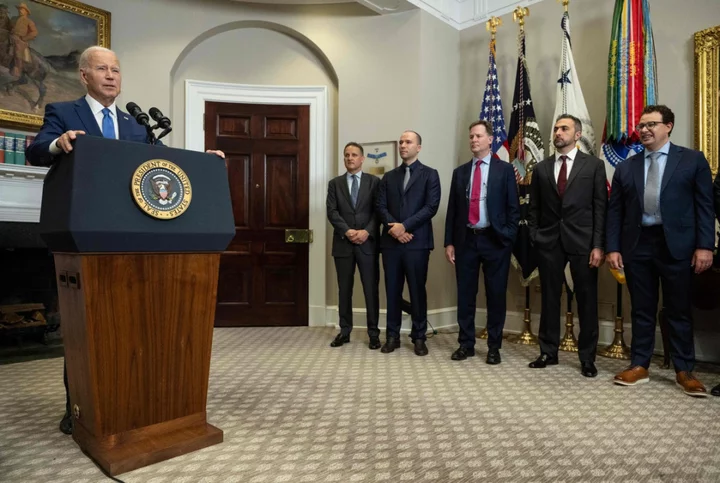
Why Biden is so concerned about AI
President Joe Biden is addressing concerns about artificial intelligence as the administration attempts to guide the development of the rapidly evolving technology. The White House said on Monday (30 October) that a sweeping executive order will address concerns about safety and security, privacy, equity and civil rights, the rights of consumers, patients, and students, and supporting workers. The order will also hand a list of tasks to federal agencies to oversee the development of the technology. ‘We have to move as fast, if not faster than the technology itself’ “We can’t move at a normal government pace,” White House Chief of Staff Jeff Zients quoted Mr Biden as telling his staff, according to the AP. “We have to move as fast, if not faster than the technology itself.” Mr Biden believes that the US government was late to the game to take into account the risks of social media, leading to the related mental health issues now seen among US youth. While AI may help drastically develop cancer research, foresee the impacts of the climate crisis, and improve the economy and public services, it may also spread fake images, audio and videos, with possibly widespread political consequences. Other harmful effects include the worsening of racial and social inequality and the possibility that it can be used to commit crimes, such as fraud. The president of the Center for Democracy & Technology, Alexandra Reeve Givens, told the AP that the Biden administration is using the tools at their disposal to issue “guidance and standards to shape private sector behaviour and leading by example in the federal government’s own use of AI”. Mr Biden’s executive order comes after technology companies have already made voluntary commitments, and the aim is that congressional legislation and international action will follow. The White House got commitments earlier this year from Google, Meta, Microsoft, and OpenAI to put in place safety standards when building new AI tools and models. Monday’s executive order employs the Defense Production Act to require AI developers to share safety test results and other data with the government. The National Institute of Standards and Technology is also set to establish standards governing the development and use of AI. Similarly, the Department of Commerce will publish guidance outlining the labelling and watermarking of content created using AI. An administration official told the press on Sunday that the order is intended to be implemented within between 90 days and a year. Safety and security issues have the tightest deadlines. Mr Biden met with staff last Thursday for a half-hour meeting that grew into an hour and 10 minutes to put the finishing touches on the order. Biden ‘impressed and alarmed’ by AI The president was engaged in meetings about the technology in the months that preceded Monday’s order signing, meeting twice with the Science Advisory Council to discuss AI and bringing up the technology during two cabinet meetings. At several gatherings, Mr Biden also pushed tech industry leaders and advocates regarding what the technology is capable of. Deputy White House Chief of Staff Bruce Reed told the AP that Mr Biden “was as impressed and alarmed as anyone”. “He saw fake AI images of himself, of his dog,” he added. “He saw how it can make bad poetry. And he’s seen and heard the incredible and terrifying technology of voice cloning, which can take three seconds of your voice and turn it into an entire fake conversation.” The AI-created images and audio prompted Mr Biden to push for the labelling of AI-created content. He was also concerned about older people getting a phone call from an AI tool using a fake voice sounding like a family member or other loved one for the purpose of committing a scam. Meetings on AI often went long, with the president once telling advocates: “This is important. Take as long as you need.” Mr Biden also spoke to scientists about the possible positive impacts of the technology, such as explaining the beginning of the universe, and the modelling of extreme weather events such as floods, where old data has become inaccurate because of the changes caused by the climate crisis. ‘When the hell did I say that?’ On Monday at the White House, Mr Biden addressed the concerns about “deepfakes” during a speech in connection with the signing of the order. “With AI, fraudsters can take a three-second recording of your voice, I have watched one of me on a couple of occasions. I said, ‘When the hell did I say that?’” Mr Biden said to laughter from the audience. Mr Reed added that he watched Mission: Impossible — Dead Reckoning Part One with Mr Biden one weekend at Camp David. At the beginning of the film, the antagonist, an AI called “the Entity”, sinks a submarine, killing its crew. “If he hadn’t already been concerned about what could go wrong with AI before that movie, he saw plenty more to worry about,” Mr Reed told the news agency. The White House has faced pressure from a number of allied groups to address possible harmful effects of AI. The director of the racial justice programme at The American Civil Liberties Union, ReNika Moore, told the AP that the union met with the administration to make sure “we’re holding the tech industry and tech billionaires accountable” so that the new tools will “work for all of us and not just a few”. Ex-Biden official Suresh Venkatasubramanian told the news agency that law enforcement’s use of AI, such as at border checkpoints, is one of the top challenges. “These are all places where we know that the use of automation is very problematic, with facial recognition, drone technology,” the computer scientist said. Read More Biden reacts to watching deepfakes of himself: ‘When the hell did I say that?’ Rishi Sunak to hold live chat with Elon Musk during AI summit Liz Truss ‘deeply disturbed’ by Sunak’s invitation to China to attend AI summit Extinction risk from AI on same scale as nuclear war, Sunak warns Revealed: Government using AI to decide on benefits and driving licences Brexit means UK can be global leader on AI, says Facebook co-founder
2023-10-31 04:24

Women seriously injured in XL bully attack
Irish police say two women are being treated in hospital for serious injuries after a dog attack.
2023-10-29 03:45

South China Sea: Biden says US will defend the Philippines if China attacks
Biden's statement comes days after collisions between Filipino and Chinese ships in the South China Sea.
2023-10-26 14:24

Students told ‘avoid all robots’ after Oregon University bomb threat prank
Students at the Oregon State University were warned to “avoid all robots” following a bomb threat prank involving automated food delivery machines on campus. The threat was made by a student on Tuesday via social media, causing university staff to issue the urgent warning. “Bomb Threat in Starship food delivery robots. Do not open robots. Avoid all robots until further notice. Public Safety is responding,” the institute wrote on X, formerly known as Twitter. The university later provided several updates on the unfolding situation, saying that the robots had been isolated in a “safe location” before being inspected by a technician. Students were advised to “remain vigilant for suspicious activity”. The emergency was declared over just before 2pm local time with “normal activities” resuming. “All robots have been inspected and cleared. They will be back in service by 4pm today,” the university later wrote online. Starship, the company that designs the robots, said that despite the student’s subsequent admission that the bomb threat had been “a joke”, it had suspended the service while investigations were ongoing. In its own statement, the company wrote: “A student at Oregon State University sent a bomb threat, via social media, that involved Starship’s robots on the campus. “While the student has subsequently stated this is a joke and a prank, Starship suspended the service. “Safety is of the utmost importance to Starship and we are cooperating with law enforcement and the university during this investigation.” Read More University of Michigan slithers toward history with massive acquisition of jarred snake specimens Trump boasts that he ‘killed’ Tom Emmer’s speaker bid ‘Bandaid on an open chest wound’: Democrats mock latest speaker chaos
2023-10-25 09:17
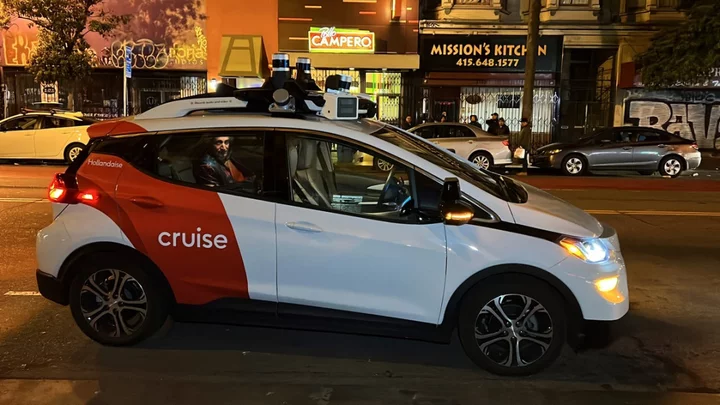
California suspends Cruise driverless taxi test after accident
Autonomous carmaker Cruise must suspend its driverless taxi operations in California immediately, state motor vehicles regulators announced on Tuesday. "The California DMV today notified Cruise that the department is suspending Cruise’s autonomous vehicle deployment and driverless testing permits, effective immediately,” the state Department of Motor Vehicles said in a statement. “The DMV has provided Cruise with the steps need to apply to reinstate its suspended permits, which the DMV will not approve until the company has fulfilled the requirements to the department’s satisfaction.” The regulator said it has the right to pull back permissions when “there is an unreasonable risk to public safety.” The suspension, which only applies to Cruise trips where no human safety driver is onboard the vehicle, follows an incident earlier this month, where a woman in San Francisco was struck by a human driver in a hit-and-run accident that propelled her into the path of a Cruise robotaxi. “Ultimately, we develop and deploy autonomous vehicles in an effort to save lives,” Cruise said in a statement to ABC7. “In the incident being reviewed by the DMV, a human hit and run driver tragically struck and propelled the pedestrian into the path of the AV. The AV braked aggressively before impact and because it detected a collision, it attempted to pull over to avoid further safety issues. When the AV tried to pull over, it continued before coming to a final stop, pulling the pedestrian forward.” “Our thoughts continue to be with the victim as we hope for a rapid and complete recovery,” the company added. The suspension is a major blow to Cruise, which is owned by General Motors. Alongside Waymo, a subsidiary of Google parent company Alphabet, Cruise saw California, and in particular San Francisco, as a key testing ground of driverless taxi technology. The companies both got permission from state regulators in August to conduct paid taxi service 24/7 without a safety driver in San Francisco, despite vigorous debate in the city over whether the AVs were safe enough to operate. The rollout of robotaxis in San Francisco has been marred with problems. Driverless cars, in particular Cruise taxis, were accused of causing traffic and impeding first responders. According to data Cruise shared with the state in August, between January and mid-July of 2023, Cruise AVs temporarily malfunctioned or shut down 177 times and required recovery, 26 of which such incidents occurred with a passenger inside, while Waymo recorded 58 such events in a similar time frame. Meanwhile, according to the San Francisco Municipal Transit Agency (SFMTA), between April 2022 and April 2023, Cruise and Waymo vehicles have been involved in over 300 incidents of irregular driving including unexpected stops and collisions, while the San Francisco Fire Department says AVs have interfered 55 times in their work in 2023. Last year, Cruise lost contact with its entire fleet for 20 minutes according to internal documentation viewed by WIRED, and an anonymous employee warned California regulators that year the company loses touch with its vehicles “with regularity.” Since being rolled out in San Francisco, robotaxis have killed a dog, caused a mile-long traffic jam during rush hour, blocked a traffic lane as officials responded to a shooting, and driven over fire hoses. Jeffrey Tumlin, San Francisco’s director of transportation, has called the rollout of robotaxis a “race to the bottom,” arguing Cruise and Waymo weren’t yet definitive transit solutions, and instead had only “met the requirements for a learner’s permit.” Others have argued the introduction of driverless cars in San Francisco and beyond will further displace workers pushed out of the taxi industry by companies like Uber and Lyft. Read More Live updates: Republicans nominate Tom Emmer for House speaker New doc on the wrestling abuse that dogged Jim Jordan’s Speaker run Trump slams ‘Globalist RINO’ Tom Emmer after speaker nomination win Live updates: Republicans nominate Tom Emmer for House speaker New doc on the wrestling abuse that dogged Jim Jordan’s Speaker run Trump slams ‘Globalist RINO’ Tom Emmer after speaker nomination win
2023-10-25 03:46

These Israeli-Americans are dropping everything to fly into a war zone and help their communities
The decision to embark on an uncertain and potentially dangerous journey to Israel wasn't easy for Kineret Levin, a 27-year-old Israeli-American.
2023-10-24 09:51
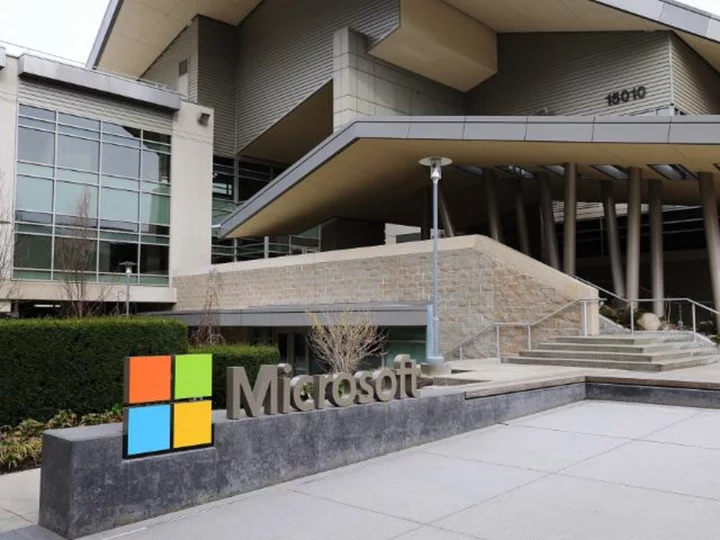
Israel's war with Hamas comes to corporate America
From ESG investing (Blackrock), to gay rights (Disney), to Donald Trump after the Capitol riots (mainstream corporate America), companies routinely take a stand. Sometimes, as with Nike and Colin Kaepernick, it helps their bottom line. Sometimes, it does the opposite — think Bud Light's support of transgender rights.
2023-10-20 22:57
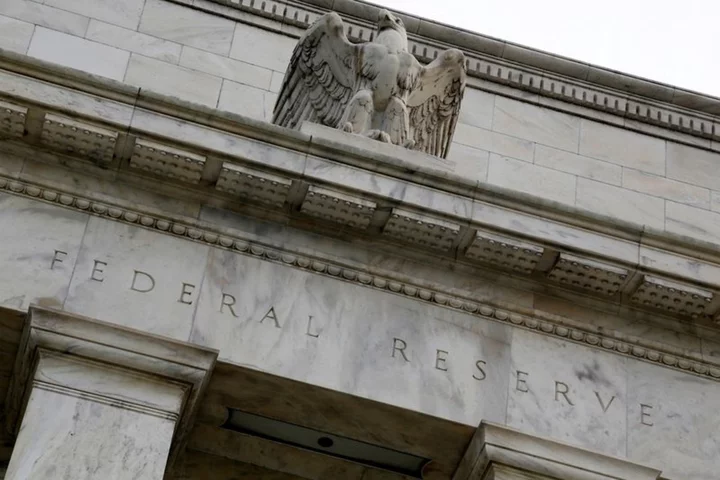
BofA pushes out final Fed rate hike expectation to December
BofA Global Research said on Friday it now expects the U.S. Federal Reserve to deliver a 25-basis-point rate
2023-10-20 21:26

US special counsel withdraws subpoena on Trump's political fundraising group -report
By Kanishka Singh WASHINGTON U.S. Special Counsel Jack Smith has withdrawn a subpoena seeking records about fundraising by
2023-10-18 07:15
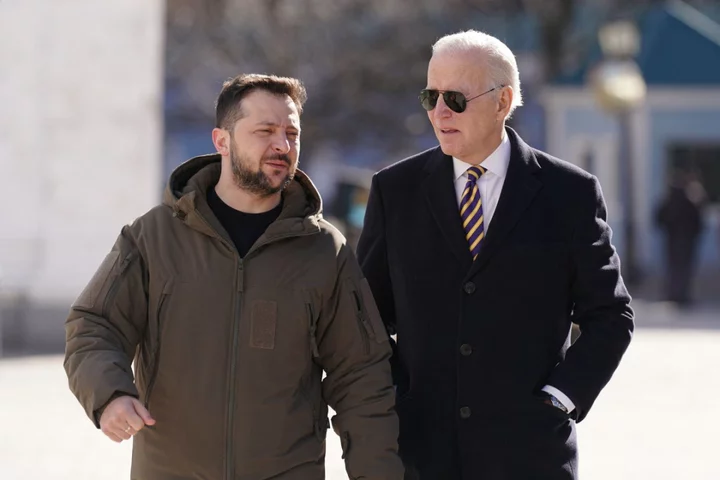
The US quietly delivered new long-range missiles to Ukraine. Why the sudden secrecy over aid?
Ukrainian special forces reported on Tuesday that they had struck two Russian military airfields, following the first-time deployment of long-range ballistic missiles supplied by the US. The details of the weapons’ delivery has been shrouded in secrecy – unlike previous aid provided to Ukraine from the Biden Administration. The missiles – which Ukraine has reportedly been petitioning the US to deliver for months – may prove key to helping Ukrainian forces in the months of conflict ahead. Here’s what we know. What are ATACMS and why does Ukraine need them? The Army Tactical Missile System (ATACMS) is a long-range guided missile that gives operational commanders the “immediate firepower to win the deep battle”. Produced by US global security and aerospace company Lockheed Martin, the missiles carry a 500lb (227kg) class blast fragmentation warhead. The weapons are fitted with a specialised GPS system and have a maximum range of 300km (around 190 miles) – though the ones supplied to Ukraine have a shorter range and carry cluster munitions. When fired, the clusters open in the air, releasing hundreds of bomblets rather than a single warhead. Ukraine says the missiles will help fuel their counteroffensive as it heads into the muddy and colder winter months, enabling troops to strike behind Russian lines while staying out of firing range. The ATACMS have been key in Ukraine’s ability to hit an airfield in Berdyansk since it is within striking distance of the shorter-range version of the missile, and the cluster munitions would be effective in hitting multiple targets. The closest Ukrainian troop positions on the western bank of the Dnieper River are just about 100 miles (160 kilometers) from Berdyansk. What have they been used for? On Tuesday, president Zelensky confirmed the ATACMS had been used on the battlefield against Russia and "executed very accurately” during an offensive known as “Operation Dragonfly”. Ukraine’s Special Operations Forces claimed that a nighttime attack on targets in eastern and southern Ukraine destroyed nine Russian helicopters and other military equipment and personnel at two airfields in Russia-occupied regions – including the one at Berdyansk. The missiles also struck an airfield in Luhansk, an occupied city in eastern Ukraine. The special forces also managed to successfully damage airfield runways, Ukraine said. “The ammunition depot in Berdyansk detonated until 4am. The detonation in Luhansk continued until 11am,” Ukrainian Special Operations Forces said in a statement. “Losses in the enemy’s manpower amount to dozens of dead and wounded. Bodies are still being pulled from the rubble.” How many ATACMS has the US provided? After many months of dragging its feet, the Biden administration greenlit the delivery of a “small number” of the missiles last month, following continued pressure from Ukraine. The delivery of the missiles was made quietly and US officials have refused to discuss it publicly. The expectation was that the first public acknowledgment would come when the missiles were used on the battlefield. An official who spoke to The Associated Press on condition of anonymity said the missiles got into Ukraine within the last few days. The US has refused to provide any details on how many missiles have been delivered, although officials had suggested that the plan was indeed to send a small number – roughly two dozen. During his Tuesday address, Mr Zelensky said: "Today I express special gratitude to the United States," adding that the missiles "have proven themselves." Why the secrecy? That intense secrecy is a marked change from previous US weapons sent by the Biden administration. In nearly all other cases, the US has publicly announced its decision prior to the weapons and equipment being shipped overseas. The hesitancy may be, in part, to do with the range of the missiles, with concerns that Kyiv could use the weapons to hit deep into Russian territory, enraging Moscow and escalating the conflict. Lingering US concerns about escalating tensions with Russia are reportedly the reason that the ATACMS version that went to Ukraine has a shorter range than the maximum distance the missiles can have. The small number of missiles sent also underscores the US reluctance to send the powerful weapons. Sending the cluster munition version will mark the second time the Democratic administration has moved to send that type of weapon. Read More Ukraine-Russia war – live: Putin’s forces suffer blow as helicopters destroyed by missile strikes, says Kyiv Experts reveal what the winter will bring for the Ukraine war – and why Putin will be banking on Trump
2023-10-18 04:52

The family who left America to live in their ancestral Italian cave
The Avellino family emigrated from a poverty-stricken Italian island in the early 20th century. But now they're back -- and living in their ancestral cave home.
2023-10-17 00:24

For Palestinian Americans and activists, doxxing is nothing new
Before college, Fouad Abu-Hijleh, 25, did not know of a world where it was wrong to support Palestinians.
2023-10-15 23:55
